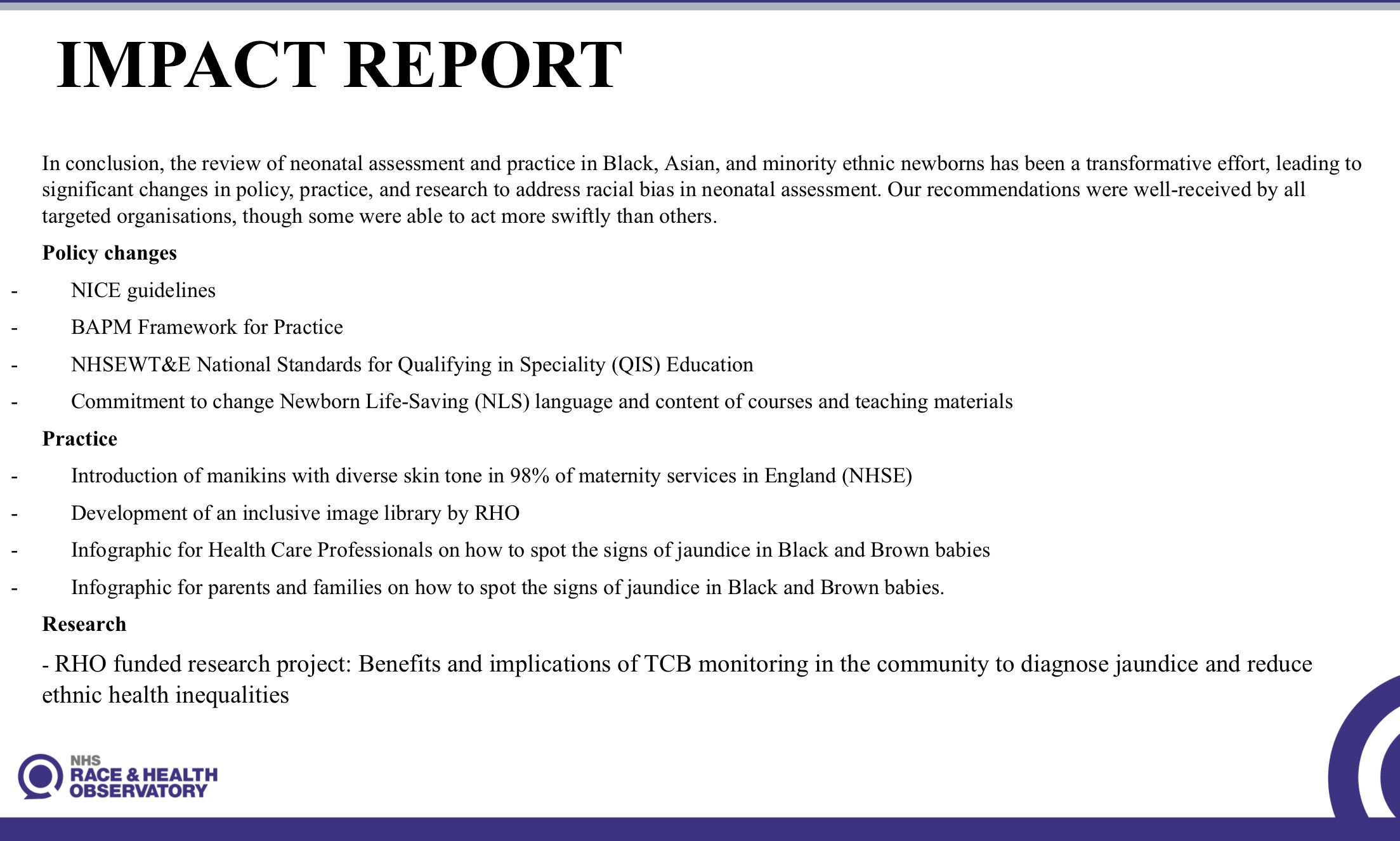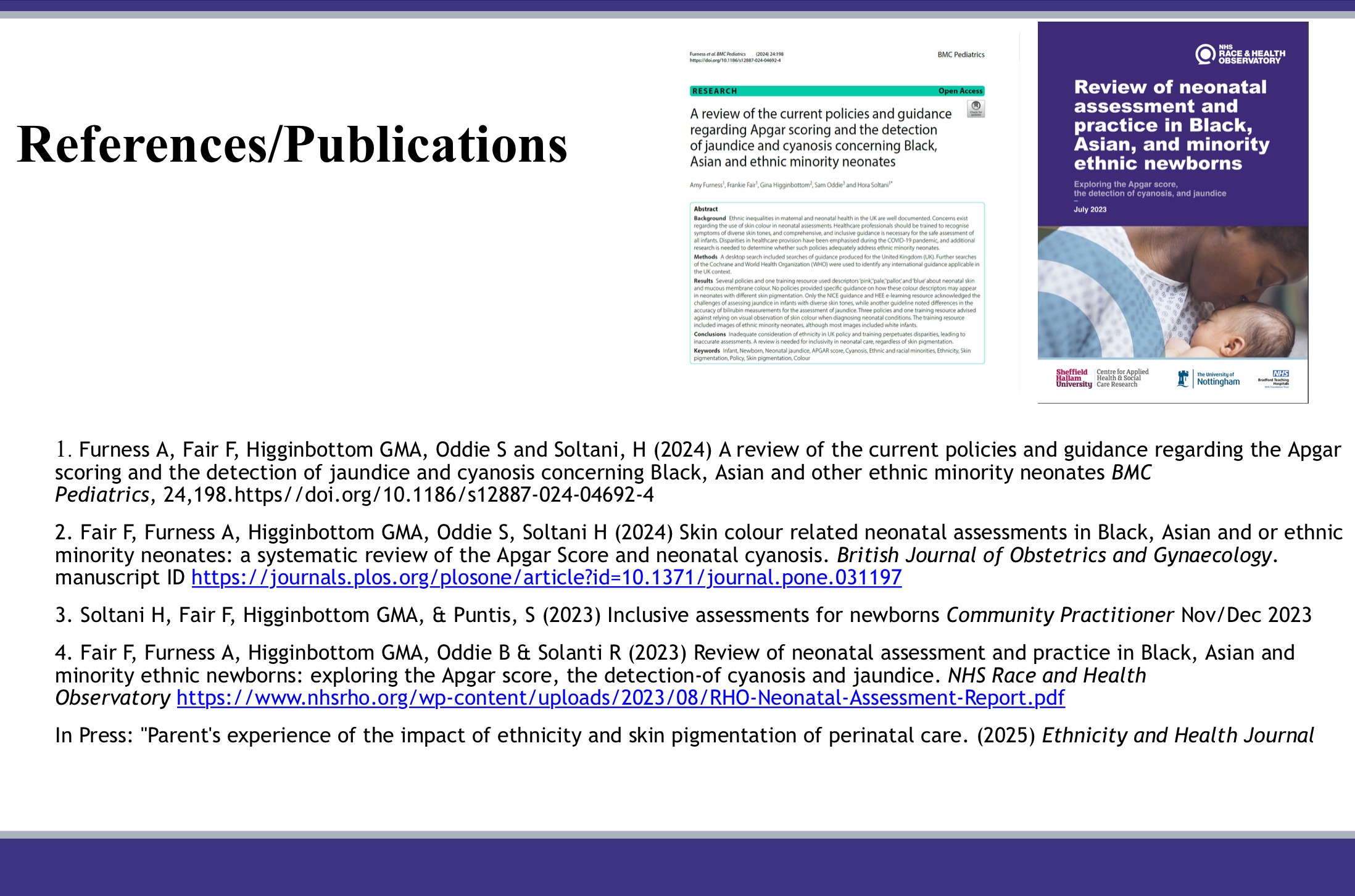From Research to Real-World Impact: Tips for Presenting Your Research
13 June 2025 | Prof Gina Awoko Higginbottom MBE, PhD, MA, Postgrad Dip (Ed. Studies), BA (Hons), RN, RM, RHV, FICN, FAAN
Presenting your research is more than sharing results; it is about creating engagement and interest, building credibility, and ensuring your work has a meaningful impact.
As researchers, especially in healthcare and community nursing, we often focus on rigor, however it is critically important to equally ensure our findings are delivered in an audience specific manner that creates engagement and impact.
Reflecting on my own journey from early conference nerves to confidently leading sessions I have learned that effective presentation is a skill YOU can develop, like any other skill it can be practised and enhanced.
Here are five key tips I wish I had realised early in my career:
-
Start With Why It Matters
You may have spent months designing a robust and rigorous study or collecting rich qualitative data, but when it comes to presenting, your audience first wants to know: Why is it important? How can this study change patient care or health status?
Begin with the problem your research addresses. Use plain language. Anchor your work in real life situations that practitioners, patients, or communities understand. The rest will follow
-
Focus on Key Messages – Visuals are Essential
It’s not about text and detail although we might feel this is essential to demonstrate rigor and robustness. Most audiences, particularly outside academia, won’t remember the specifics. What they will remember is the one or two insights that resonated.
Ask yourself:
- What’s the single most important message I want them to leave with?
- How does this help improve care, inform policy, or enhance thinking?
Return to these points and emphasise throughout your presentation.
-
Be a Storyteller, Not Just a Researcher
Narratives and stories connect with people more than slides. Think about the origin of your research, what created the idea? Was there a patient encounter that motivated the question? Did something unexpected happen during data collection?
Even a small anecdote can humanise your work and invite your audience in.
-
Design Slides as Support, Not Prescriptions
Keep slides simple. Aim for one key message per slide and limit text. Use visuals, diagrams, and quotes where possible. Your slides should support you, not distract from what you are saying.
Remember, YOU are the presentation. The slides are just your companions. Recently at our joint ICCHNR/QICN we invited scholars to give a 15 min Research in Focus (RIF) talk similar to a TED talk. Engaging with the presenter alone worked so well.
-
Practice With Others – Especially Non-Specialists. Rehearse aloud.
I often record my presentations and then listen back to my articulations making the necessary adjustments.
Rehearse your presentation with someone outside your field maybe a partner, colleague in another field, a friend, or a family member. If they can follow your message and find it meaningful, you are on the right track.
Also, invite feedback from trusted mentors or peers. Sometimes the smallest tweak can make a big difference in how your message is received.
Final Thoughts
Presenting research is not about performance, it’s about connection. That might be visual, oral, emotional or cognitive. Whether you’re speaking at an international conference or a local community event, your goal is the same: to share knowledge in ways that generate thought, inspire action, and serve communities.
If you’re early in your research journey, know that confidence comes with practice. And if you have been doing this for a while, don’t be afraid to reimagine your style. We all benefit from making our research more engaging, more inclusive, and more accessible.
After all, the true impact of our research work lies not just in publication, but in the transformative nature, that is how it is used, shared, and translated into care delivery and policy.
Finally, remember that presenting is not performance, it is about connection. You’re not there to impress, but to invite others into the significance of your work. Over time, with feedback and reflection, your presenting voice becomes an extension of your research identity.
And if you stumble or make errors (as I certainly have), that is part of the process too. You are human and so is your audience and they are empathetic. They have interest in your research and presentation, that is why ‘they showed up’ online or in-person to your event.
Here is an exemplar from the last study I was engaged in which generated great interest, media coverage and policy change:



Prof Gina Awoko Higginbottom MBE was appointed in 2015 as the Mary Seacole Professor of Ethnicity and Community Health at the University of Nottingham – the first nurse of BME origin to hold a professorship in a Russell Group university in England and is now Professor Emerita. She is a nurse, midwife and health visitor.
Formerly a Canada Research Chair in Ethnicity and Health (renewed) for 8 years at the University Alberta, Canada the faculty ranked #1 for nursing in Canada. The first women of colour to hold a CRC awarded in 2007, the CRC award is a marker of research excellence. She holds a substantial track record of publication and substantial grant acquisition in the UK and Canada leading 16 externally funded grants as Principal Investigator.

 Back to Blog
Back to Blog